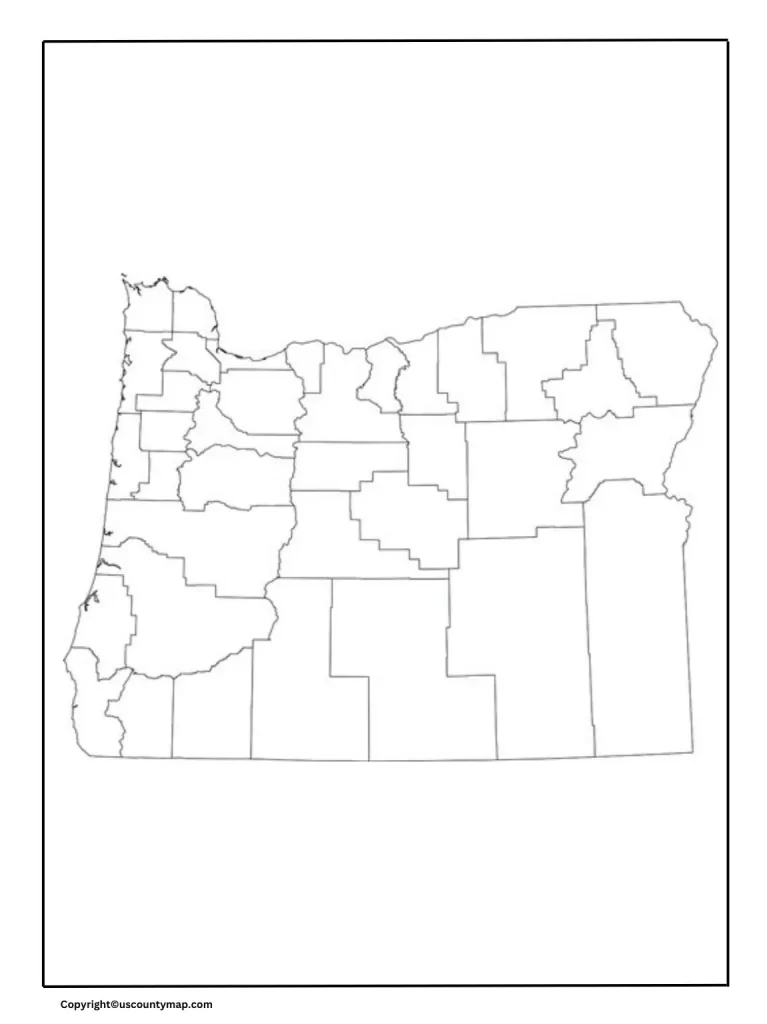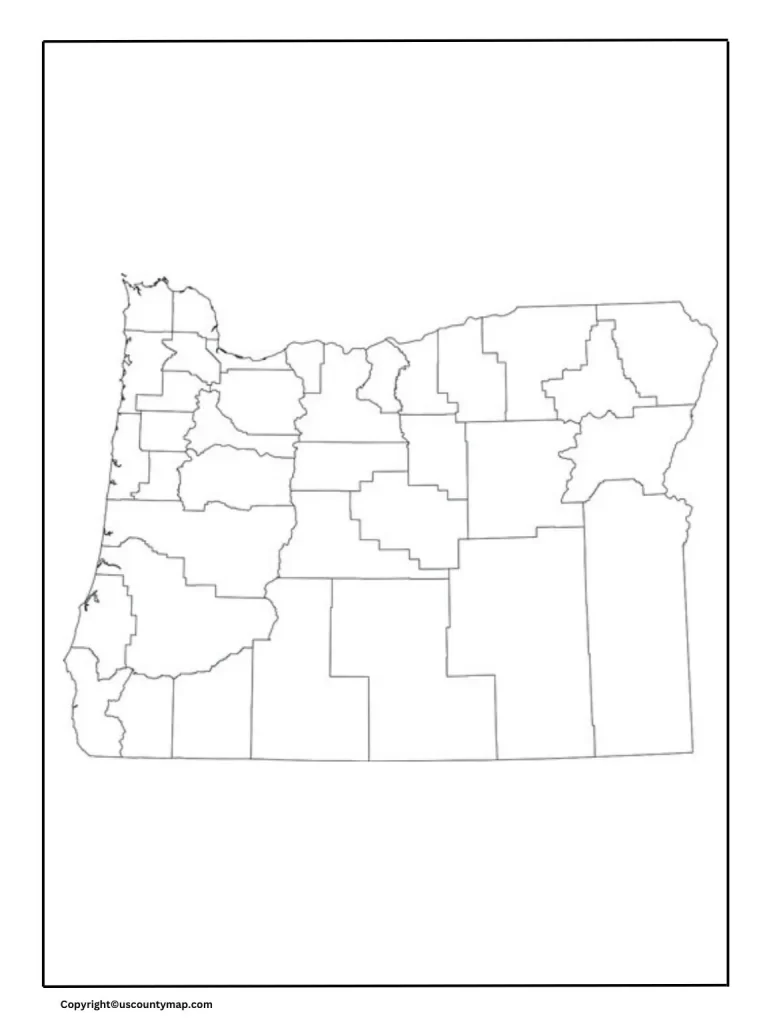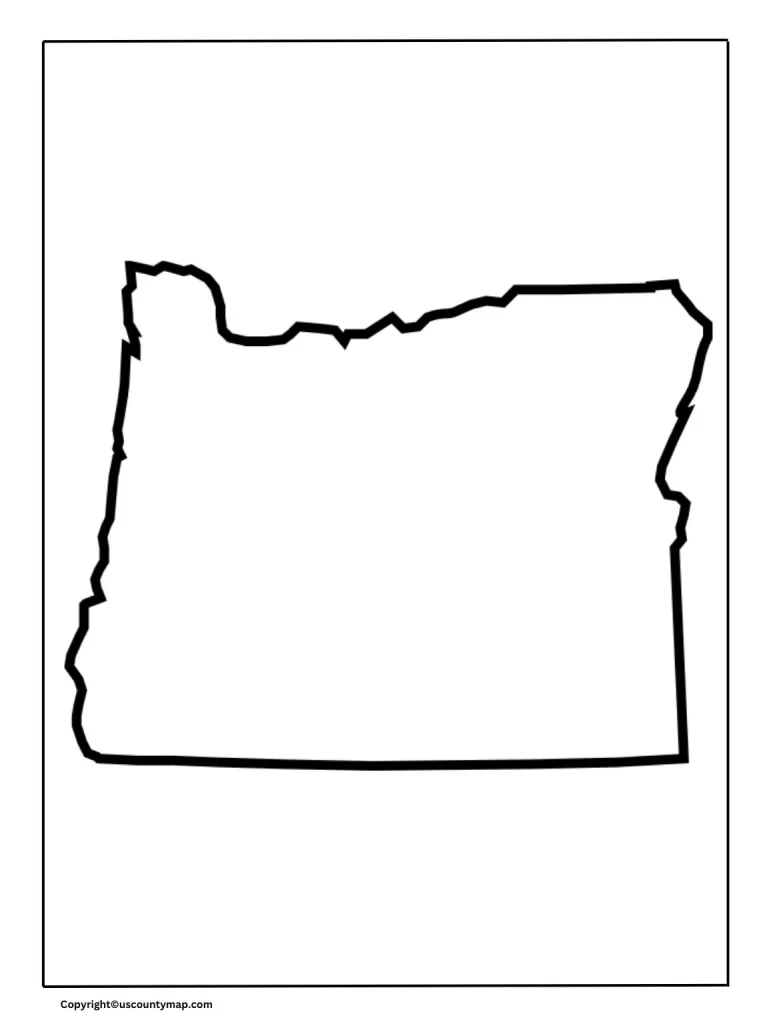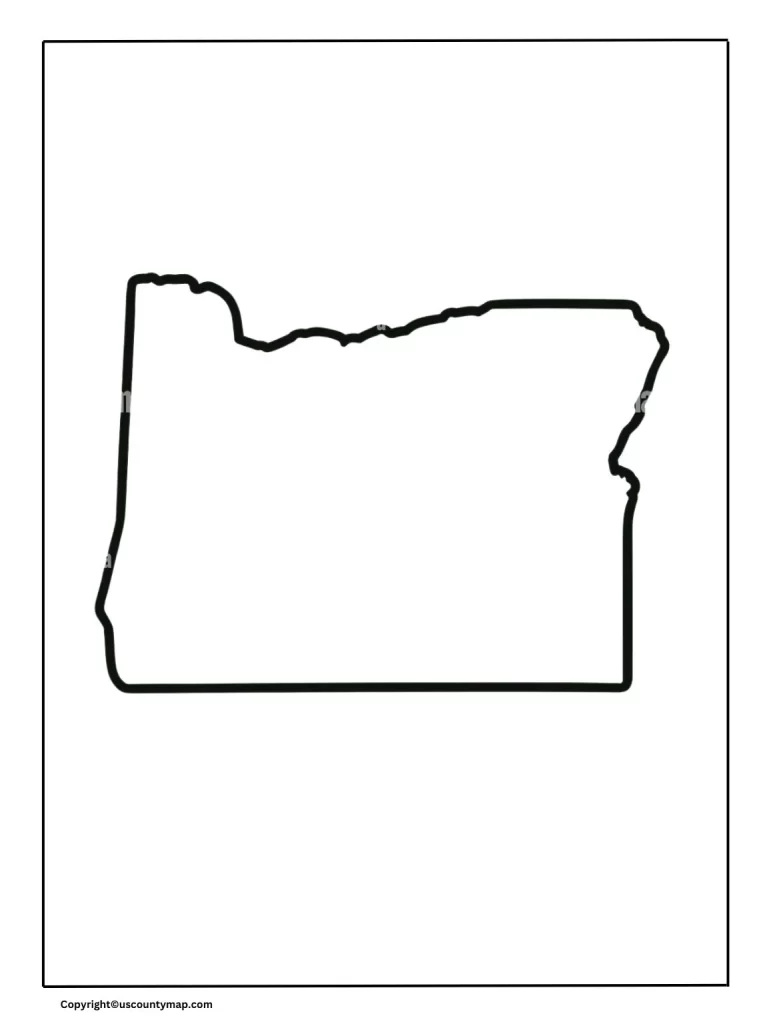A blank Oregon county map is an influential instrument used for a range of functions across different spheres. Below is an elaborate discussion on its significance and how it can be beneficial for various users:
Educational Purposes
- Geography Education: Students and teachers use empty maps to teach and learn about the geographical configuration of Oregon. It helps in understanding the spatial relationship and boundaries of 36 counties of the state.
- History lessons: Vacancy maps are beneficial in historical education, showing how county lines have changed over the years, correlated with disposal, political development and economic development.
- Civil Education: Vacant maps facilitate understanding of local government structure, such as courts and administrative functions of every county.
Planning and Development
- Urban Planning: Urban and regional planners utilize these maps to plan infrastructure projects, land use, and zoning. It assists in visualizing and planning urban growth and rural development.
- Environmental Planning: Environmentalists use blank maps to identify protected areas, natural resources, and environmental hazards, assisting in conservation efforts and sustainable development.
Business and Marketing
- Market Analysis: Companies utilize blank maps to analyze markets, plan logistics, and set up distribution networks. It aids in identifying key markets and areas of business growth.
- Sales Territories: Companies mark sales territories and customer sites on blank maps to maximize their sales strategies and allocation of resources.
Blank Map of Oregon

Political and Administrative Uses
- Election Campaigns: Political strategists employ blank maps to strategize campaign activities, identify voting trends, and coordinate canvassing operations.
- Government Administration: Officials utilize these maps for the administration of official tasks, resource planning, and territorial administration.
Research and Data Visualization
- Demographic Studies: Researchers employ blank maps to represent demographic information such as population density, age distribution, and ethnic make-up.
- Public Health: Public health administrators monitor disease transmission, identify health facilities, and design interventions using these maps.
Printable Map of Oregon
Information of Oregon Counties
Oregon is further divided into 36 counties with distinct geographic, demographic, and economic features. Below is an in-depth review of some of these counties:
- Multnomah County
- Population: Densest county, where Portland, Oregon’s largest city is located.
- Economy: Large economic center with technology, manufacturing, and service industries.
- Geography: Situated in the state’s northwestern area along the Columbia River.
- Washington County
- Population: Population growing fast, within the Portland metropolitan area.
- Economy: High-technology industries, also known as the “Silicon Forest.”
- Geography: Varied landscapes with urban, forest, and agricultural land.
- Population: Population growing fast, within the Portland metropolitan area.
- Clackamas County
- Population: Combination of urban and rural citizens.
- Economy: Varied economy with agriculture, manufacturing, and retail industries.
- Geography: South of Portland, with mountainous areas and productive valleys.
- Lane County
- Population: Eugene is part of this population, which includes the University of Oregon.
- Economy: Education, health care, and manufacturing are prominent economic sectors.
- Geography: Famous for its diverse landscape of coastline, forest, and mountains.
- Marion County
- Population: Salem, the state capital, is part of this population.
- Economy: Government, farming, and manufacturing are significant contributors.
- Geography: Situated in the Willamette Valley, with rich fertile land.
- Deschutes County
- Population: One of the most rapidly growing counties, with Bend as its major city.
- Economy: Tourism, outdoor recreation, and technology are major sectors.
- Geography: Famed for its high desert scenery and outdoor recreation.
- Jackson County
- Population: Comprises the cities of Medford and Ashland.
- Economy: Healthcare, tourism, and agriculture are major economic drivers.
- Geography: In southern Oregon, with varied landscapes from valleys to mountains.
- Population: Comprises the cities of Medford and Ashland.
- Douglas County
- Population: Famous for rural communities and the timber industry.
- Economy: Traditionally dependent on logging and timber, with increasing wine production.
- Geography: Covers part of the Oregon Coast Range and Umpqua River Valley.
- Josephine County
- Population: Incorporates Grants Pass, famous for recreation and tourism.
- Economy: Tourism, healthcare, and farming.
- Geography: Has the Rogue River and a combination of mountainous terrain and forest.
- Klamath County
- Population: Rural population around Klamath Falls.
- Economy: Agriculture, forestry, and geothermal resources.
- Geography: In south-central Oregon and home to Crater Lake National Park.
Oregon Map Worksheet
Applications in Detail
- Education: In the classroom, an empty map of Oregon counties is an interactive tool where students learn about the geography of the state by populating county names, prominent cities, and geographical features.
- Urban Planning: Planners utilize these maps to visualize zones for new construction, infrastructure work, and city expansion to promote balanced growth and sustainability.
- Market Analysis: Businesses employ these maps to superimpose sales and market information, aiding the discovery of trends, the targeting of new customers, and logistics optimization.
- Election Campaigns: Electoral campaigns leverage blank maps to map districts, learn about voter blocks, and strategize targeted outreach.
- Research: Scholars and researchers display information visually on these maps, showing trends in demographics, public health, or economic activity by county.
Oregon Map Outline [Blank Map of Oregon]
In short, an empty Oregon county map is a fundamental instrument in many sectors, providing an adaptable platform for visualizing, analyzing, and planning different activities. Its use in education, planning, business, government, and research renders it a resourceful tool for many users.



